15 years one-stop China custom CNC machining parts factory
 4087 |
Published by VMT at Jan 21 2025 | Reading Time:About 5 minutes
4087 |
Published by VMT at Jan 21 2025 | Reading Time:About 5 minutes
Have you ever admired the warm, rustic charm of antique brass and wondered why your own brass items lack that timeless patina? Brass is a beautiful metal used in everything from decorative fixtures to mechanical components, but many people struggle to achieve that authentic, aged look. Instead, they end up with surfaces that look too new or fail to oxidize evenly.
It’s frustrating to see dull, inconsistent finishes when you know that perfectly oxidized brass can elevate the look of any project. Whether you’re working on vintage restorations, crafting custom décor, or producing brass CNC machining parts that demand an old-world charm, getting the patina just right can be both time-consuming and confusing. Plus, with so many techniques out there—chemical solutions, heat treatments, or even everyday household items—it’s easy to feel overwhelmed.
In this article, we’ll demystify how to oxidize brass using antique methods, guiding you through each step in an organized, straightforward way. From exploring why oxidation is beneficial to uncovering five common ways to achieve a patina, we’ll equip you with professional insights. Whether you’re a DIY enthusiast or rely on CNC machining services for brass CNC machining parts, these guidelines will help you produce beautifully oxidized brass that meets your aesthetic and functional needs.
To oxidize brass using antique methods, the key steps involve cleaning the brass thoroughly, choosing an appropriate oxidation technique—such as chemical patinas, heat treatments, or natural weathering—and then sealing the final finish. First, remove all oils, oxides, and residues to ensure the brass surface is free of contaminants. Next, select your preferred oxidation method: chemical solutions can deliver quick, controlled patinas; thermal oxidation relies on heat and oxygen exposure to darken the metal; natural patina methods require time and exposure to weather; household items like vinegar and salt can create a gentle patina; and commercial brass oxidizers are designed for consistent, predictable results. Finally, once you’ve achieved your desired antique look, apply a protective topcoat—like wax, lacquer, or powder coating—to preserve the finish and protect against further corrosion. By following these essential steps, you can confidently transform brand-new brass surfaces into vintage showstoppers.
Now that you know the basic roadmap for producing an antique patina on brass, let’s dig deeper into the details. From understanding the properties of brass and why oxidation is often sought after, to exploring safety measures and the various oxidation methods, we’ll walk through each component of the process. Whether you’re doing a personal DIY project or managing a custom CNC machining job, this guide will equip you with the knowledge to achieve professional and consistent results. Read on to discover how to elevate the appearance and functionality of your CNC machining parts made of brass.
Brass is an alloy primarily composed of copper and zinc, sometimes including small amounts of other metals like lead, tin, or aluminum to modify its properties. One of the standout characteristics of brass is its bright, golden color, which can range from a warm yellow tone to a more reddish hue depending on the exact copper-to-zinc ratio. Because of its malleability and relatively low melting point, brass is a popular choice in CNC machining shops; it’s easy to work with and can be formed or machined into complex shapes. Additionally, brass has good corrosion resistance, making it suitable for marine environments and other settings that demand endurance against moisture.
Another distinguishing feature of brass is its acoustic qualities, which is why it’s used for musical instruments like trumpets and trombones. Beyond music, you’ll find brass in architectural fixtures, decorative items, and mechanical components. Its versatility extends to CNC prototype machining, where prototypes need to be tested not just for function but also for aesthetic appeal. Over time, brass develops a patina—an oxidized layer that can either enhance or detract from its appearance, depending on personal preference. This natural characteristic is at the heart of why many people intentionally oxidize brass for an antique finish.
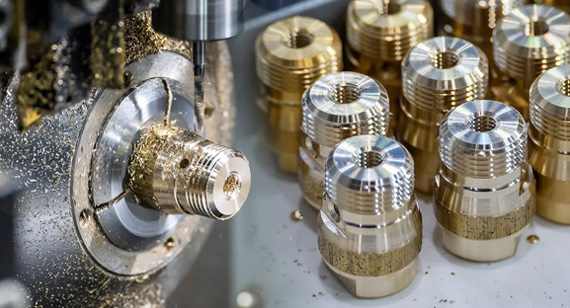
Oxidizing brass is a common technique for several practical and aesthetic reasons. The process involves creating a controlled layer of oxidation on the surface of the brass, which not only changes its appearance but can also improve its durability and functionality. Here’s why people choose to oxidize brass:
1. Enhancing Aesthetic Appeal
One of the main reasons for oxidizing brass is to achieve a desired visual effect. The oxidation process can produce a wide range of colors and textures, from subtle golden tones to deeper browns, blues, greens, or even purples. This creates a vintage, rustic, or antique look that is highly sought after in decorative items, jewelry, and artwork. By manipulating the oxidation process, brass can take on unique, artistic finishes that are not achievable through traditional polishing alone.
2. Creating a Patina for Character
Patina, a layer of oxidation that forms naturally over time, gives brass an aged, weathered look. Many people intentionally accelerate this process to add character to their products, giving them a more timeworn, classic, or "antique" appearance. In design and art, patinas are seen as adding depth and history to the object, making it visually interesting and unique.
3. Improving Corrosion Resistance
When brass is exposed to air and moisture, it can develop a greenish film (copper carbonate), commonly known as verdigris. While this natural patina can be visually pleasing, it can also serve as a protective layer. Oxidizing brass intentionally creates this layer of copper oxide, which helps protect the underlying metal from further corrosion, especially when the piece is exposed to harsh environmental conditions like humidity or salty air. This can significantly extend the lifespan of brass components in outdoor or industrial settings.
4. Enhancing Durability and Scratch Resistance
The oxidation layer formed during the process can also serve as an additional layer of protection, increasing the brass's resistance to scratches, wear, and other forms of physical damage. Brass, while durable, can show signs of wear over time, especially on decorative or high-touch surfaces. By oxidizing it, you add a tough outer layer that helps reduce the appearance of scratches and preserves the integrity of the item.
5. Improving the Fit of Joints in Brass Items
Oxidized brass may also have slightly better adhesion properties for certain applications, such as soldering or welding. In these cases, the oxidation layer can help the material bond more effectively, especially if a patina is being used for artistic or decorative soldering joints.
6. Creating Uniformity in Antique Restoration
In antique restoration and renovation, oxidizing brass is often used to match new parts with old ones. By artificially aging brass components, restorers can ensure that all parts of a piece—whether it's a lamp, door hardware, or a piece of furniture—look uniform in age and appearance. This helps maintain the historical integrity of antiques and ensures that any newly added elements blend seamlessly with the older parts.
7. Making Brass Easier to Maintain
When oxidized, brass is often easier to maintain than its polished counterpart. Polished brass is highly reflective and tends to show smudges, fingerprints, and water spots easily. Oxidized brass has a matte or satin finish that reduces the appearance of such imperfections, making it look cleaner for longer and requiring less frequent polishing or upkeep.
8. Increased Value in Certain Markets
Certain markets, such as jewelry design or high-end furniture, place a premium on the aesthetic and functional qualities of oxidized brass. Items like jewelry, vases, and decorative sculptures with intentional patinas or oxidized finishes can command higher prices due to their unique, handcrafted appearance and the craftsmanship involved in achieving the finish.
9. Environmental and Eco-Friendly Finish
Oxidizing brass is a more environmentally friendly approach compared to certain chemical coatings or plating methods. Instead of using synthetic coatings or artificial finishes, oxidation relies on natural processes, making it a more sustainable way to create attractive, long-lasting brass finishes without the need for harsh chemicals or additional materials.
Conclusion
In essence, oxidizing brass is done to improve both its visual appeal and functional performance. Whether it’s for creating an antique finish, improving corrosion resistance, adding durability, or achieving a specific aesthetic, oxidation serves a wide range of purposes in industries like jewelry making, interior design, and industrial applications. The result is not only a more beautiful, unique piece but one that is more durable and resistant to wear and tear.
When experimenting with how to oxidize brass, it’s vital to prioritize safety. Working with chemicals such as oxidizing solutions and acids can pose health risks if used incorrectly. Always wear protective gloves, eyewear, and clothing to shield your skin and eyes from splashes. Ensure that your workspace has adequate ventilation, especially if you’re using volatile or fume-emitting solutions like household cleaners or commercial brass oxidizers. If you’re employing heat treatments or thermal oxidation methods, exercise caution with open flames or high temperatures, and keep a fire extinguisher at hand. Lastly, always store chemicals securely, away from children and pets, and follow local regulations for proper disposal. This is crucial whether you’re conducting a small DIY project at home or managing an industrial-scale CNC machining services operation.
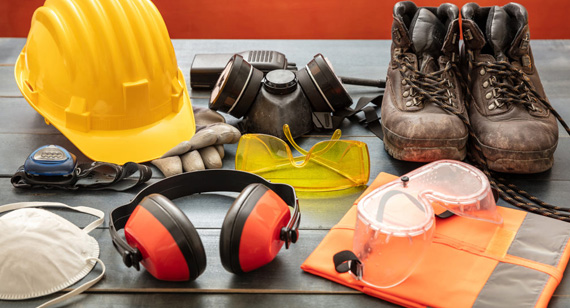
Before choosing an oxidation process, it’s important to identify the type of metal you’re working with. Brass surfaces can appear similar to bronze or copper, and brass components might be plated onto steel or zinc die castings. The three most common base materials encountered in antique finishing are:
1.Solid Brass, Bronze, or Copper
These are often used for decorative fixtures and high-quality, high-end items.
2.Steel Stampings, Spun Parts, or Machined Parts
Steel is sometimes brass-plated to achieve a brass-like appearance, requiring a different approach to oxidation.
3.Zinc Die Castings
Often found in furniture hardware or decorative trim, zinc can be plated with copper and then brass to mimic solid brass parts.
Understanding the underlying metal helps you select a compatible cleaning and oxidation process, ensuring a more reliable outcome—particularly critical in custom CNC machining and CNC prototype machining scenarios where consistent results are needed.
Oxidizing brass can be done using various approaches, each with its advantages and ideal applications. Whether you need a light patina or a deep, dark finish, the method you choose depends on factors such as desired appearance, time constraints, and the scale of your project.
Oxidizing brass is a process of creating a controlled layer of oxidation (usually a patina) on the surface of the brass to achieve a specific color or finish, or to improve its resistance to corrosion. Here are common methods to oxidize brass:
1.Chemical Patina (Using Oxidizing Solutions)
Chemical patinas offer quick, predictable results. These solutions often contain acids or other reactive agents that expedite the oxidation process. The application usually involves dipping, brushing, or spraying the brass surface. Once the patina develops, it’s essential to neutralize any residual chemicals and rinse thoroughly to prevent ongoing corrosion. This method is ideal for both hobbyists and professional CNC machining shops that need uniform finishes on brass CNC machining parts.
Steps:
Materials Needed:
Process:
2.Thermal Oxidation (Using Heat and Air Exposure)
Exposing brass to heat can induce a controlled oxidation layer. This approach can be done using a torch or oven, allowing the brass to develop colors ranging from light brown to deep black, depending on temperature and duration. Careful control of heat is vital to avoid warping or damaging the metal. Thermal oxidation is especially suitable for smaller components or artistic pieces.
Another method for oxidizing brass is to heat it until it reaches a temperature where oxidation naturally occurs. This is often used for creating a more rustic or aged look on the surface of brass.
Steps:
Materials Needed:
Process:
3.Natural Patina (Weathering)
If you prefer a fully authentic, time-tested patina, you can let nature take its course. Simply place the brass outdoors, expose it to moisture, air, and varying temperatures, and allow the oxide layer to form gradually. This process is slower and less predictable but can yield beautifully organic and varied hues—a perfect option for those who appreciate the true marks of time.
Over time, exposure to natural elements like air, humidity, and even pollutants will cause brass to oxidize naturally. This process can take weeks, months, or even years, depending on environmental conditions.
Steps:
Process:
4.Using Household Chemicals (Vinegar and Salt)
For a budget-friendly and relatively safe approach, common household items like vinegar and salt can create a mild acid bath. The mixture can be sprayed or brushed onto the brass. Over a few hours or days, you’ll notice a greenish or brown patina forming. This method is great for DIY projects and small-scale undertakings, though it may be less consistent than commercial solutions.
You can use household products like vinegar and salt to create a more controlled oxidation effect at home.
Steps:
Materials Needed:
Process:
5.Using Commercial Brass Oxidizers
Pre-formulated brass oxidizers are specifically designed for repeatable, controlled outcomes. They often come with guidelines for dilution, application technique, and reaction time, making them suitable for larger batch processes. They’re particularly beneficial for CNC machining services that need uniformity across multiple parts.
There are commercial brass oxidizing solutions available that are specifically designed to create a patina on brass. These solutions are often faster and more predictable than other methods.
Steps:
Process:
Conclusion
Oxidizing brass can be done using several methods, each offering a unique finish or color. The chemical patina method is often the most controlled, while heat oxidation provides a more natural, uneven result. For a deeper, more permanent effect, you can also combine these methods or use a commercial oxidizing solution. Always remember to handle chemicals and heat sources with care, and consider sealing the final piece to protect the finish.
No matter which oxidation method you choose, proper cleaning is the cornerstone of successful patina formation. Residues, oils, and other contaminants will hinder the oxidation reaction, leading to blotchy or inconsistent finishes. In professional contexts, like custom CNC machining, cleaning is often done with industrial-grade equipment to ensure every surface is pristine.
Cleaning Requirements
Before applying any oxidizing treatment, verify that your brass surfaces meet the following criteria:
Oils from handling or machining can create uneven patinas.
Any existing oxide or tarnish should be removed if you desire a consistent new patina.
Particularly relevant in casting or molding processes, as these agents can linger on the surface.
When selecting a metal cleaning process, many factors must be considered:
(a) Identification of the Substrate
Determine if it’s solid brass, steel stamping, or zinc die casting to avoid using harsh chemicals that might damage the base metal.
(b) Identification of the Soil
Clarify if you’re dealing with grease, oxide scales, or polishing residues to choose the best cleaning method.
(c) Degree of Cleanliness Required
High-end finishes, like those expected in CNC prototype machining, demand near-pristine surfaces.
(d) Capabilities of the Available Facilities
Your equipment and resources—whether industrial or DIY—will shape which cleaning methods are feasible.
(e) Environmental Impact
Choose eco-friendly cleaning agents if possible and ensure proper waste disposal.
(f) Operating Costs
Consider both the upfront and long-term costs, especially if you run a CNC machining shop with high production volumes.
(g) Nature of Subsequent Chemical Operations
Some oxidation processes require specific surface conditions, so plan your cleaning steps accordingly.
Various cleaning techniques are employed to prepare brass surfaces for oxidation. The optimal choice depends on the scale of the operation, the type of contaminants, and the environmental considerations.
Blast Cleaning
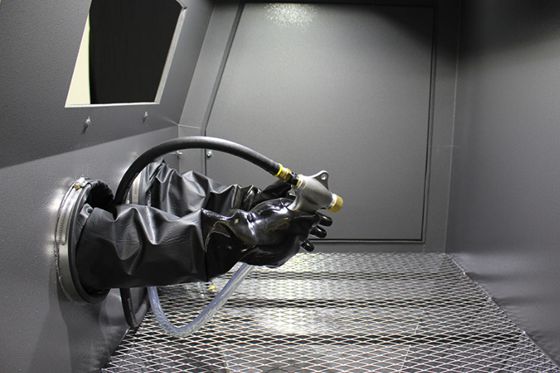
Cold Solvent Cleaning
Vapor Degreasing
Emulsion Immersion Cleaning
Alkaline Electrocleaning
Alkaline Immersion Cleaning
Acid Cleaning
Ultrasonic Cleaning
| Advantages |
Disadvantages |
|
| Abrasive Blast Cleaning |
|
|
| Alkaline Soak Cleaning |
|
|
| Electrocleaning |
|
Requires current flow; rectifier Safety hazards-heat; chemicals |
| Vapor Degreasing |
|
|
| Ultrasonic Cleaning |
|
|
After cleaning, conducting a cleanliness test ensures that no contaminants remain. Simple tests include the “water break” test—where water should sheet uniformly across the metal surface. In industrial settings, analytical techniques like FTIR (Fourier Transform Infrared Spectroscopy) can detect residual oils. For CNC machining services, consistent cleanliness is critical, as residues can compromise the final patina or subsequent finishes.
Electroplating can precede the oxidation step, especially if you’re working with steel or zinc die castings that have a brass plating. Adding a copper strike layer before brass plating can improve adhesion. Once plated, you can proceed with the oxidizing process to achieve an antique brass look. This approach is particularly relevant for CNC prototype machining when the base material isn’t brass but needs the appearance and properties of oxidized brass. By controlling voltage, current density, and plating times, you ensure uniform coverage that will respond consistently to your chosen patina or oxidation technique.
Surface coloring for brass can be accomplished using various chemical or thermal processes. Each method offers unique shades, from subdued browns to deep blacks. Below are some popular methods:
Sulfur and Arsenic-Based Solutions
Historically used in antique restoration, these solutions offer rich, dark patinas but can be toxic. Modern safety standards often recommend alternatives.
Copper/Selenium Room Temperature Oxidizers
These solutions create a dark brown to black finish at ambient temperatures. Their ease of use makes them popular in small workshops and CNC machining shops seeking consistent results.
Heated Alkaline Oxidizers
Operating at elevated temperatures, these oxidizers typically produce a uniform black surface. They’re frequently used in industrial finishing lines where speed and consistency are paramount.
Black Nickel Coatings
This electroplating process produces a smooth, dark aesthetic. It can be sealed with protective topcoats for durability.
Patina
Classic patinas develop via chemical reactions over time, offering varied tones and a naturally aged look. They can be enhanced or accelerated using specialized solutions.
Oxidized brass can be further refined by adding highlights or polished sections. This approach draws attention to certain areas, creating a visually striking contrast between the darker patina and the bright brass.
1.Hand Polishing with Abrasives or Buffing Wheels
This is a manual process where you selectively polish raised areas, edges, or decorative features to reveal shiny brass under the darker surface.
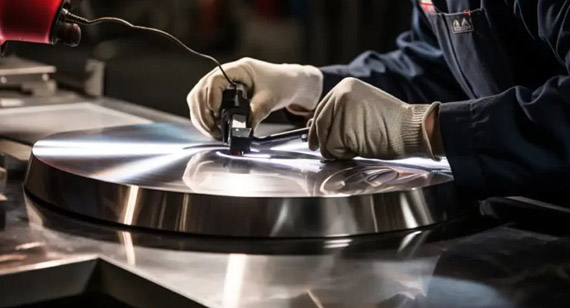
2.Automatic Polishing Machines
For larger batches or CNC machining parts, automated systems can quickly buff surfaces to the desired shine, reducing labor costs.
3.Tumbling and Vibration Methods
Great for smaller parts, these methods use abrasive media to uniformly polish or deburr items in bulk.
Once you’ve achieved the perfect patina on your brass surface, it’s crucial to protect it against further oxidation, abrasion, or chemical exposure. Here are some typical topcoat options:
Air-Dried Lacquers
Easy to apply and quick to dry, suitable for small-scale projects.
Baked or Cross-Linked Resins
Provide a more robust finish. Ideal for high-wear environments and large-scale CNC machining shop operations.
Clear Powder Coatings
Offers excellent durability and a uniform surface, commonly used in commercial applications.
Electrophoretic Liquid Lacquers
Applied through an electrical process, ensuring even coverage on complex shapes.
Wax and Oil Finishes
Impart a softer, more natural feel but require periodic reapplication. Often preferred in antique restorations for authenticity.
Every oxidizing process creates waste streams that must be managed responsibly. Whether you are a home hobbyist or operate a custom CNC machining facility, adhering to local environmental and safety regulations is mandatory.
Alkaline Cleaning Residues
May contain oils, detergents, and metal particles. Often treated by neutralization or oil-water separation.
Acidic Residues
Require neutralization before disposal, ensuring the pH meets regulatory standards.
Cyanide Residues
Extremely hazardous and require specialized treatment to break down cyanide compounds.
Solid Wastes
Metal shavings, spent abrasives, and sludge should be collected and disposed of following local guidelines.
Pull-Out Rinse
Captures the bulk of contaminants before final rinsing, reducing treatment costs for water disposal.
Room Temperature Oxidation Line Wastewater Containing Copper and Selenium
Requires careful handling to remove heavy metals. Ion exchange or chemical precipitation are common treatments.
Below are examples of process cycles for different base metals, illustrating how cleaning, rinsing, plating, and oxidizing steps can be sequenced.
A. Solid Copper, Brass (e.g., Welded Lamp Components)
B. Steel Stampings (e.g., Stamped Lamp Holders, Rack Finishing)
C. Zinc Die Castings (e.g., Cabinet Hardware, Rack Finishing)
Selecting the right method to oxidize your brass depends on several key factors:
For those who prefer a hands-on approach, you can easily achieve an antique look using common household items. Start by cleaning the brass thoroughly with warm soapy water or a mild degreasing solution to remove any oils. Then, prepare a mixture of vinegar and salt—about one cup of vinegar to one tablespoon of salt—and apply it to the brass surface with a cloth or spray bottle. Over the next few hours or days, the brass will begin to darken. You can expedite the process by placing the brass in a sealed container with the vinegar-salt mixture or adding exposure to ammonia fumes (with caution and proper ventilation). Once you’ve reached your desired color, rinse the brass, allow it to dry thoroughly, and apply a protective wax or lacquer to lock in the patina. This DIY method is economical, relatively safe, and suitable for small decorative pieces or CNC prototype machining trials.
Brass is used in a wide array of industries—from architectural and lighting fixtures to automotive and aerospace components. In custom CNC machining, brass proves beneficial for manufacturing parts that require durability, corrosion resistance, and a stylish look. You’ll find it in valves, gears, and ornamental hardware. Given brass’s acoustic properties, the musical instrument sector relies on it extensively. In electronics, brass connectors provide reliable conductivity. Meanwhile, decorative markets appreciate brass for vintage-styled furniture, home décor, and art pieces. Whether your focus is on mechanical function or aesthetic appeal, brass remains a versatile and sought-after material across multiple sectors.
At VMT, we specialize in delivering brass CNC machining parts that meet the highest standards of precision and quality. Our CNC machining services cover everything from CNC prototype machining to large-volume production, ensuring that clients receive the exact form, fit, and finish they need. With an emphasis on consistent quality control, we can also incorporate oxidation treatments—whether chemical patinas or other antique methods—to achieve a desired aesthetic. By leveraging state-of-the-art equipment and experienced technicians, VMT remains a trusted partner for anyone looking for how to oxidize brass effectively and sustainably. From custom lamp fittings to intricate mechanical components, our comprehensive CNC machining shop and finishing processes guarantee results that blend both functionality and beauty.
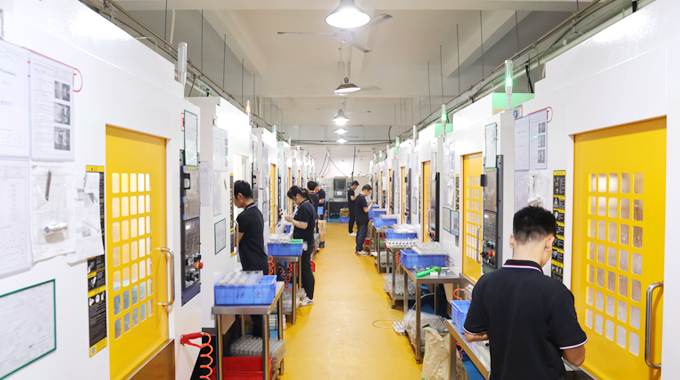
Oxidizing brass to achieve that antique look is as much an art as it is a science. By understanding the metal’s characteristics and following proper cleaning and safety protocols, you can transform modern brass surfaces into timeless pieces that highlight the metal’s natural warmth and elegance. Various methods—from chemical patinas to natural weathering—enable you to control the patina’s depth and color, while additional finishing touches like polishing highlights and protective topcoats help you maintain the appearance over the long term. Whether you’re a DIY hobbyist or a professional in CNC machining services, the key is to match the process to your project’s specific needs, budget, and environmental considerations. Armed with the knowledge detailed here, you’ll be well on your way to creating beautifully aged brass items that capture the spirit of vintage charm.
1. How to oxidize brass quickly?
Use a commercial oxidizing solution or a vinegar-salt mixture for faster results. Ensure the brass is clean, then apply the solution until the desired patina forms.
2. How to patina brass?
Patina can be achieved by allowing brass to react with chemical agents or natural elements. Popular methods include chemical patinas, household solutions like vinegar and salt, and simply leaving the brass outdoors to weather over time.
3. How to age brass with hydrogen peroxide?
Combine hydrogen peroxide with vinegar and salt, then apply or immerse the brass. The peroxide accelerates oxidation, darkening the surface more rapidly.
4. How long does it take for brass to oxidize?
It depends on the method. Chemical oxidizers can work in minutes or hours, while natural patinas might take weeks or months.
5. At what temperature does brass oxidize?
Brass begins oxidizing at relatively low temperatures—under normal conditions it gradually forms a patina. For thermal oxidation, temperatures often range from 400°F to 600°F or higher, depending on the desired result.
6. How to make old brass look new again?
Remove the patina with a suitable brass cleaner or polish, buff the surface to restore its shine, and apply a protective coating like lacquer to retain the renewed finish.
7. Can you remove patina from brass?
Yes, patina can be removed through mechanical polishing or chemical cleaners designed for brass. However, multiple removals and re-applications can affect the metal’s surface.
8. How to remove oxide from brass?
Use acidic cleaners or mechanical abrasives. A vinegar and salt soak or commercial brass cleaners can dissolve oxide layers, revealing fresh metal underneath.
9. Does brass change color over time?
Yes, brass naturally tarnishes and may develop a brownish or greenish patina. Proper sealing can slow this process.
10. How long does it take for brass to develop patina?
Under normal atmospheric conditions, it can take weeks to months, but the rate varies depending on humidity, pollutants, and handling.
11. What solution can make brass black?
Copper/selenium solutions, heated alkaline oxidizers, or black nickel plating can all create a black finish on brass.
By understanding and applying these methods, you can confidently handle everything from CNC machining parts in a CNC machining shop to personal home décor projects, ensuring that the finished brass items achieve your desired antique look.
